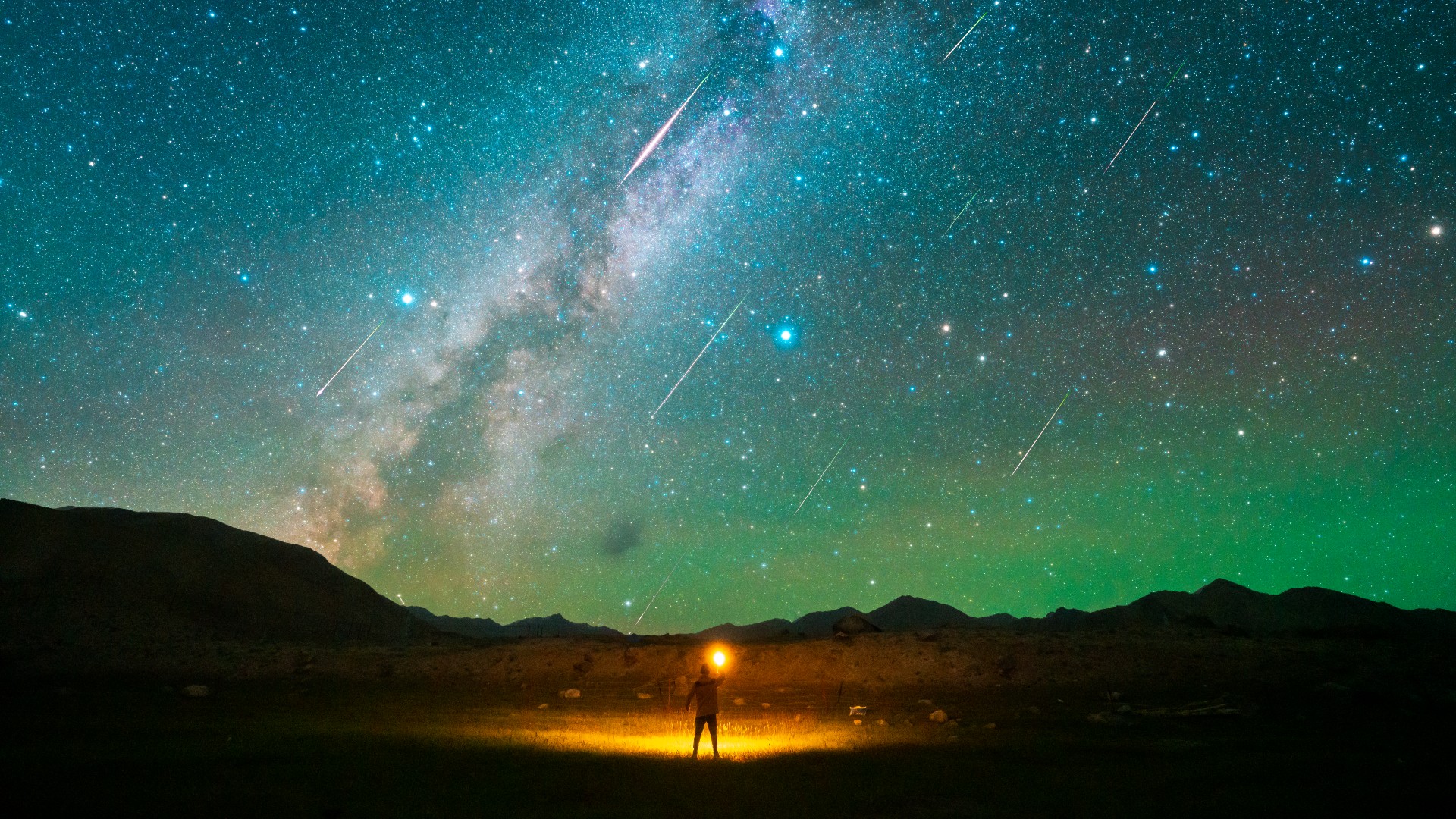
The annual Perseid meteor shower will peak on Aug. 12 and 13, with the moon in the perfect position to make this year's event potentially one of the most impressive displays of "shooting stars" in years.
Active from July 14 through Sept. 1, this annual display is one of the best known and commonly observed meteor showers in the Northern Hemisphere. The shower occurs when the hours of darkness have noticeably increased after the short nights around late June's summer solstice, making falling bits of rocky debris in Earth's atmosphere more visible.
Related: 'Potentially hazardous' 600-foot asteroid detected near Earth after a year of hiding in plain sight
The Perseid meteor shower is one of the most prolific displays of shooting stars of the year, with up to 100 meteors per hour predicted to be visible during the peak hours, according to the American Meteor Society. The Perseids' absolute peak time is predicted to hit at midnight EDT (0400 GMT) on Aug. 13.
The Perseid peak lasts about 16 hours, according to Sky at Night. Because the peak lasts so long, it will be possible to see shooting stars as soon as it gets dark, with the most meteors per hour likely to be visible after midnight.
In the early hours of Aug. 13, the sky will be as dark as it gets no matter your location. In addition, the constellation Perseus — from which the meteors appear to originate — will be climbing higher in the northwestern sky, as seen from the Northern Hemisphere.
Although clear weather is required for a good view, the night sky will be nearly as dark as possible throughout the peak. That's thanks to a waning crescent moon being barely 8% lit and thus not interfering with the darkness. It will rise in the east around dawn on Aug. 13.
In case there are clouds on the peak night, it's wise to look the night before — though expect shooting-star rates to be about half that of the peak.
Shooting stars occur when meteoroids from asteroids or comets are left in Earth's orbital path. When meteoroids enter Earth's atmosphere at high speeds and burn up, they're called meteors. A comet named 109P/Comet Swift-Tuttle, which orbits the sun every 133 years, is responsible for the Perseids. Its shooting stars travel at 37 miles per second (59 kilometers per second) and frequently leave long wakes of light and color behind them as they streak.
The best way to see shooting stars is to find a secluded viewing spot away from city lights, let your eyes get used to the dark for 20 minutes, and then sit or lie down and look at the sky, Timeanddate.com advises. Although the meteors will seem to come from Perseus, they can appear anywhere in the sky.
This year, the peak occurs while two other minor meteor showers, the Southern Delta Aquariids and the Alpha Capricornids, are also active.
You can see the meteor shower fine with just your eyes. However, if you're looking to get into skywatching and astronomy, consider investing in a pair of stargazing binoculars or a good small telescope to get the most detailed views of the cosmos.







